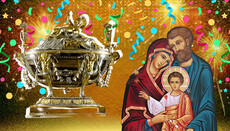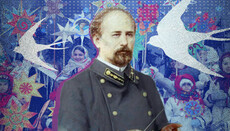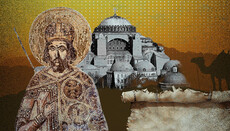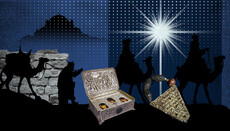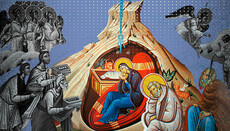About the "Eighth Ecumenical" Council and present times
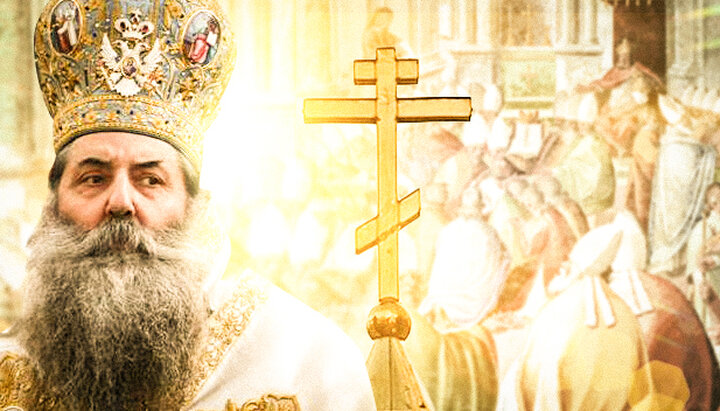
The Greek Church claims we owe the establishment of Orthodoxy to the Eighth Ecumenical Council. What is it about? Why does Phanar prefer to remain silent about it today?
On February 6, 2022, in his sermon at the Divine Liturgy, Metropolitan Seraphim of Piraeus (Orthodox Church of Greece) told how a Council was convened under St. Photius of Constantinople in 879-880, which Vladyka called the Eighth Ecumenical Council. Metropolitan Seraphim declared we owe this Council the preservation of the purity of the Orthodox faith. “The Holy Eighth Ecumenical Council, the one which we owe our Orthodoxy, with strength, faith and power condemned the Filioque heresy, i.e. the addition to the Creed, and anathematized anyone who would want to alter the truth in the future,” said metropolitan At the same time, the head of the Church of Constantinople did not mention this Council at all at the service on the day of the memory of the saint. Why? After all, it is no less significant than the officially recognized seven Ecumenical Councils.
Saint Photius of Constantinople
Saint Photius was born around 820 into a noble Byzantine family. During the still ongoing iconoclasm his family firmly adhered to icon veneration. Photius's father, Sergius, was the nephew of the holy Patriarch Tarasius, under whom icon veneration was restored at the Seventh Ecumenical Council in 787. On the maternal side, the family of the future saint was related to the imperial house. Approximately in 832 the whole family was sent into exile for their fidelity to icon veneration, while their property was expropriated. According to some reports, while in exile, Father Photius was martyred for the veneration of icons. Despite the persecution of the iconoclasts, Photius was able to receive such a brilliant education that, in the words of his contemporaries, “his knowledge in almost all secular sciences was so outstanding that he could rightfully be considered the glory of his age and could even argue with the ancients.”
In 842, the two-year-old Emperor Michael III was enthroned under the regency of his mother Theodora. In 843, the final restoration of icon veneration took place and the feast of the Triumph of Orthodoxy was established. The family of the future Patriarch Photius was returned from exile, he and his brothers received high positions at court. Photius took the post of protosikrit – the head of the imperial office. He was also engaged in teaching. One of his students was the Enlightener of the Slavs, Saint Cyril Equal to the Apostles.
In 856, another very unassuming struggle for power unfolded in Constantinople, which greatly affected church affairs, and in which Photius was involved. Having reached adulthood, Michael III began to resent the fact that all affairs in the state were run by his mother, the holy Empress Theodora, as well as a certain logothete Theoktist. This discontent was taken advantage of by the two brothers of Theodora, Varda and Petrona, who pulled off a conspiracy. Logothete Theoktist was simply killed, but Theodora was more difficult to tackle. They decided to forcibly tonsure her as a nun and send her into confinement in a monastery. However, the then Patriarch Saint Ignatius not only refused to do this, but openly denounced Varda for his actions. Moreover, the patriarch publicly excommunicated Varda from Holy Communion.
After this, Patriarch Ignatius was accused of participating in a rebellion against the emperor and sent into exile on the island of Terevinth, where he was tortured and forced to to abdicate. These efforts were not successful, and Saint Ignatius continued to call himself Patriarch. In the meantime a Council was convened in Constantinople (858), at which Ignatius was deposed, and Photius was elevated to the Constantinople See, who was led through all the priestly ranks within a week. On December 25, 858, he was ordained a bishop with the elevation to the patriarchal throne. Among the episcopate, clergy and influential laity, the Ignatian and Photian parties were formed, which began to wage an irreconcilable struggle with each other.
"Photian schism"
Can Photius be blamed for what happened? Hardly. First, he did not at all seek the patriarchate. He was one of the highest dignitaries of the state, and besides, he could understand perfectly what sorrows and difficulties the patriarchal ministry was associated with.
Nevertheless, representatives of the "Ignatians" turned to Pope Nicholas and, decalring their readiness to recognize his supremacy in the entire Church, asked to depose Photius and recognize Ignatius. Pope Nicholas in 863 anathematized Photius and recognized Ignatius as the legitimate Patriarch of Constantinople.
Photius did not reciprocate to pronounce anathema to the pope, but then there began certain developments in Bulgaria. In 864, Photius personally baptized the Bulgarian prince Boris and sent an archbishop and priests to Bulgaria to baptize the people. In 865 Saints Equal-to-the-Apostles Cyril and Methodius went there, preaching the Gospel in the Slavic language. These successes caused serious opposition in Rome. Taking advantage of the weakness of Bulgaria and the need for Tsar Boris to seek political support in the West, the pope sent his bishops to Bulgaria, who began to expel the Byzantine clerics and implant Latin customs and Latin teachings in Bulgaria, including the Filioque heresy.
St. Photius wrote a district letter to the eastern patriarchs, in which he informed them about the affairs of the Latins in Bulgaria, and in rather harsh terms accused them of apostasy from the Orthodox faith. In particular, Photius wrote the following: “The very sacred and holy Creed, indestructibly approved by all conciliar and ecumenical decrees, was encroached by them – oh, these intrigues of the villain! – to counterfeit with false speculations and ascribed words, inventing in excessive impudence the innovation that the Holy Spirit proceeds not only from the Father, but also from the Son. Who ever heard such speeches made by any of the wicked? What is the gliding serpent (cf. Isa. 27:1) that spewed such things into their hearts? Who would have endured it when Christians actually introduce two causes in the Holy Trinity: on the one hand, the Father – for the Son and the Spirit, on the other, the Son for the Spirit again, and destroy one-man command into ditheism, and tear Christian theology into something , not at all better than Hellenic mythology, and arrogantly treat the dignity of the Superexistent and Life-Giving Trinity?"
In 867, a Council was held in Constantinople, at which Pope Nicholas was declared deposed and anathematized. Communication between Rome and Constantinople ceased, the "Photian" schism took on its finished form.
In the same year, events took place due to which circumstances changed dramatically. Basil the Macedonian reigned in Constantinople, and Pope Nicholas died in Rome. The new emperor wanted reconciliation with Rome; moreover, according to some sources, Patriarch Photius accused him of regicide and excommunicated him from Communion. Based on these circumstances, Photius’ fate was sealed – he was deposed, while Ignatius was returned to the patriarchal throne.
An embassy was sent to the new Pope Adrian II, briefing him on all the recent changes. The Pope repeated the anathema to Photius, as well as to the entire Council of Constantinople in 867, and sent his legates to Constantinople so that with the help of Emperor Basil the Macedonian they would hold a council, at which they would confirm all the papal anathemas. This Council took place in 869-870 and was declared ecumenical despite its extreme smallness. The Council fulfilled its mission, confirmed the deposition of Photius, and also recognized the supremacy of the Pope, declaring his lack of jurisdiction even to the Ecumenical Council. Almost all of Photius's supporters were firmly loyal to him and refused to sign the council's decisions. All of them, more than 200 people, were deposed together with Photius
Communication between Rome and Constantinople was restored, but the Byzantines soon realized that they had paid too much for this. Subordination to the pope no longer suited anyone, including the returned Patriarch Ignatius. So in 879, there was held the Council, which Metropolitan Seraphim of Piraeus called the "Eighth Ecumenical", and which has every reason to be called so.
"Eighth Ecumenical Council" of 879-880
The quotation marks in this designation are a tribute to the generally accepted opinion that there were seven Ecumenical Councils.
Even during the dispute between Patriarch Ignatius and Pope John VIII, Basil the Macedonian suggested that the pope send his legates to a new council in Constantinople, which would resolve all differences. The Pope sent legates, but when they arrived in Constantinople, they found that Ignatius had already died, while Photius was on the patriarchal throne. They wrote to Rome about it, asking for new instructions. The pope agreed to recognize Photius as patriarch, subject to reconciliation with the supporters of Ignatius, and, apparently, gave the legates the authority to act more or less independently, based on the circumstances.
The Council opened at the beginning of November 879 in the church of Hagia Sophia. According to the acts, it was attended by 383 bishops, which contrasts sharply with the beginning of the Council of 869-870, which was attended by a little over 10 people. Representatives of all five patriarchates were present, including the papal legates, who even presented Patriarch Photius with episcopal vestments as a gift from Pope John VIII.
The most important issue that Pope John VIII wanted to resolve at that Council was the recognition of Rome's rights to Bulgaria. But this demand was rejected on the spot by the fathers of the Council, who referred to the fact that this issue was within the competence of the emperor.
Among the most important decisions of the Council were the following:
- The Council of Constantinople in 787 against the iconoclasts was recognized as the Seventh Ecumenical;
- The Council of Constantinople of 869-870, which recognized the supremacy of the pope and condemned Photius, was condemned, and its decisions were declared null and void;
- St. Photius was reinstated in his patriarchal dignity.
Several canonical rules were also adopted, including the mutual recognition of the validity of excommunications, defrocking and anathemas. Here we can recall the recognition by all Local Churches, including Constantinople, of the anathema to Filaret Denisenko, which totally complied with this rule.
Still, the most important decision of the Council of 879-880 was adopted at the last meeting. It concerned the assertion of the immutability of the Niceno-Constantinopolitan Creed and, in particular, read as follows: “Jointly sanctifying and preserving intact the venerable and divine teaching of our Lord and Savior Jesus Christ, which has been established in the bosom of our mind, with unhesitating resolve and purity of faith, as well as the sacred ordinances and canonical stipulations of his holy disciples and Apostles with an unwavering judgement, and indeed, those Seven holy and ecumenical Synods which were directed by the inspiration of the one and the same Holy Spirit and effected the [Christian] preaching, and jointly guarding with a most honest and unshakable resolve the canonical institutions invulnerable and unfalsified, we expel those who removed themselves from the Church, and embrace and regard worthy of receiving those of the same faith or teachers of orthodoxy to whom honor and sacred respect is due as they themselves ordered. Thus, having in mind and declaring all these things, we embrace with mind and tongue and declare to all people with a loud voice the Horos (Rule) of the most pure faith of the Christians which has come down to us from above through the Fathers, subtracting nothing, adding nothing, falsifying nothing; for subtraction and addition, when no heresy is stirred up by the ingenious fabrications of the evil one, introduces disapprobation of those who are exempt from blame and inexcusable assault on the Fathers. As for the act of changing with falsified words the Horoi (Rules, Boundaries) of the Fathers is much worse than the previous one (...)"
The decision was made in the form of a separate Horos.
The acts of the Council recorded the enthusiastic reaction of its participants to the announcement of this Horos. The bishops shouted the following: “Thus we think, thus we believe, into this confession were we baptized and became worthy to enter the priestly orders. We regard, therefore, as enemies of God and of the truth those who think differently as compared to this. If one dares to rewrite another Symbol besides this one, or add to it, or subtract from it, or to remove anything from it, and to display the audacity to call it a Rule, he will be condemned and thrown out of the Christian Confession. For to subtract from, or to add to, the holy and consubstantial and undivided Trinity shows that the confession we have always had to this day is imperfect. [In other words the problem which is implied but not named has to do with the Trinitarian doctrine]. It condemns the Apostolic Tradition and the doctrine of the Fathers. If one, then having come to such a point of mindlessness as to dare do what we have said above, and set forth another Symbol and call it a Rule, or to add to or subtract from the one which has been handed down to us by the first great, holy and Ecumenical Synod of Nicaea, let him be Anathema!”
The Filioque heresy was not named in the documents of the Council, but no one doubted that this was precisely what was being discussed. After all, the main claim of the Byzantines to the activities of the Latins in Bulgaria was precisely that the Latin missionaries preached the Filioque there.
Archbishop Vasily (Krivoshein), in his study “Symbolic Texts in the Orthodox Church,” writes the following about this Council: “Both in its composition and in the nature of its decisions, this Council bears all the signs of an Ecumenical Council. All five Patriarchates of the then Church, including the Roman one, were represented at it, so that this Council is the last Council common to both the Eastern and Western Churches. It was attended by 383 fathers, that is, it was the largest Council since the time of Chalcedon. It was convened as an Ecumenical Council and calls itself in its acts 'the great and Ecumenical Council'."
But the most important sign that allows us to talk about the Council of 879-880. as the Eighth Ecumenical, was that he came up with a definition of a doctrinal character, if not literally, but in essence, rejecting the heresy of the Filioque, which threatened the Church. In addition, the decisions of this Council were recognized throughout the Church – by all Local Churches, including the Roman Church. It should be noted that one can come across the opinion that Pope John VIII rejected the decisions of the Council and again severed relations with Photius, but serious historical science considers this to be a fiction of Photius' ill-wishers. Oddly enough, the Counciccl of 879-880 was recognized by the Latins as Ecumenical until the 12th century, when Rome, in the course of the struggle for its supremacy in the Church, began to consider (and still considers) the Eighth Ecumenical Council not the Council of 879-880, the pseudo-Council against Photius 869-870.
Results
The Filioque heresy at the end of the ninth and tenth centuries had not yet established itself as a compulsory doctrine in Rome. Mostly it dominated in Germany and France. The popes of Rome treated it more or less tolerantly, but were in no hurry to declare it the official teaching of the Сhurch. However, by the end of the 10th century, when the German influence in Rome increased significantly, and personalities of Germanic origin became popes (the first was the Saxon Gregory V), the Filioque began to dominate in Rome as well. The final statement of this false doctrine is considered to be its mention in the Creed during the coronation of the German Emperor Henry II in 1014, under Pope Benedict VIII.
As for the current situation, its connection with the Council of 879-880 is quite obvious. In the light of the plans of Phanar and the Vatican to unite in the near future, the question of the unity of the dogma arises. Patriarch Bartholomew of Constantinople states that “the dialogue between the Catholic and Orthodox Churches, which began after the Second Vatican Council, first at the diplomatic and then at the theological level, continues with perseverance, realism and complete trust in Divine Providence on the path leading to the goal that will ensure such a desired complete unity."
However, no one has lately heard the Catholic Church express a desire to renounce the heresy of the Filioque or any of its other delusions. This means that Phanar believes that unification can occur even if the Catholics preserve all their false teachings. At the same time, the Council of Constantinople of 879-880, which anathematized the Filioque, becomes very inconvenient. It becomes even more inconvenient if it is recognized as the Eighth Ecumenical Council. Therefore, today Phanariots prefer not to remember it. Opponents of unity with the Latins, such as Metropolitan Seraphim of Piraeus, on the contrary, try to draw attention to it and say that the doctrine of the Filioque was rejected by the Church at the end of the 9th century.
There is one more thing to be inferred from the story about the “Photian schism”. This is a statement that in the 9th century, the Orthodox and Latin church traditions were already formed as separate from each other. In Bulgaria, which at that time received Baptism, there was a choice of where to receive it: from Rome or from Byzantium. And the Bulgarians were well aware that this is not the same thing. This choice was even more obvious in 988, when Kiev Rus was baptized. Therefore, narratives made by Ukrainian Catholics of the Orthodox rite that Saint Prince Vladimir embraced the faith common to Rome and Constantinople, and that the Russian Church was in unity with the Roman See, are nothing more than speculations on the date of the official break between the Orthodox and the Latins in 1054.
